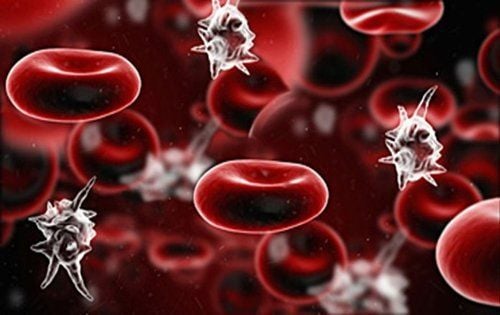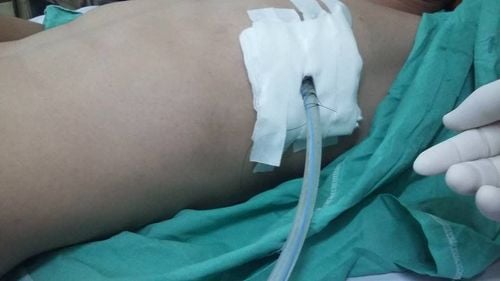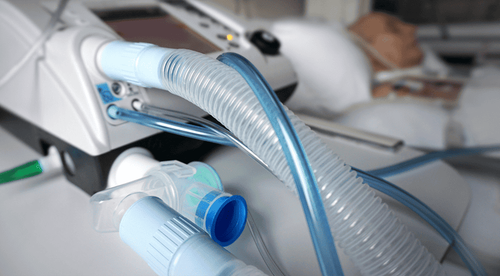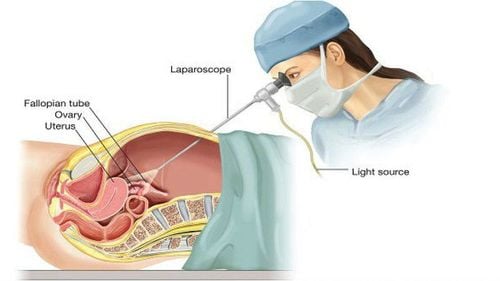This is an automatically translated article.
A drain is a common instrument used in medicine. A drainage tube can be a simple tube or a system of tubes connected to a cavity or an area inside the body, to bring fluid out of the body or from one part of the body to another. body. Drainage fluid varies depending on the function and location of each individual type, including blood, inflammatory fluid, gas, bile, urine...
1. Overview of medical drains
There are many different types of drainage tubes, based on their role they can be divided into:
Drains in the digestive system: Draining fluid from the biliary system, gallbladder, splenic fossa, subhepatic area, pouch along with Douglas, right iliac fossa after appendectomy, colonic fissure. Intrathoracic tube: Drain air and/or fluid from the pleural space, drain fluid from the pericardial cavity, mediastinum. Drainage tube in the urinary system: Drain from the calyx of the kidney, the pit of the kidney, the ureter, the bladder. Drainage tubes in wounds: Drainage of blood, inflammatory fluid from abscesses and soft tissues after trauma or surgery. Drainage tube in the head region: Draining blood and fluid from subcutaneous incision, ventricular cistern, brain parenchyma,... The preferred type of drainage tube has the following characteristics:
Made of materials less likely to cause allergic reactions to the body, can be rubber, plastic. Capable of contrast for monitoring by X-ray film. The drainage tube must be soft and have little adhesion to the organs of the body.
2. Why does the patient need to wear a drain?
In medicine, there are many diseases in which there is a lot of inflammatory fluid, blood, pus, and gas. These patients, if the abnormal secretions are not resolved, the disease will progress more and more seriously. Therefore, a drainage tube was born to assist in removing these abnormal fluids from the body. In addition, placing a drainage tube also helps prevent some complications during treatment, including:
Prevention of infection of the wound and other surrounding organs. Avoid fluid accumulation after surgery. Monitoring and prevention of bleeding complications after surgery. Monitor postoperative progress through the characteristics of drain fluid such as quantity, color, and daily fluid nature.

Đặt ống dẫn lưu có tác dụng chống nhiễm trùng
3. General principles when taking care of wounds with drainage tubes
Drainage care plays an important role in determining the effectiveness of treatment after surgery or completion of procedures. Basic principles to follow when caring for drains and drain wounds include:
Absolute sterility of the entire drainage system. The drainage bag or container is always placed about 50-60 cm lower than the drained area. Do not bend or block the drains. The patient should be placed in a comfortable position for good drainage, without lying on or straining the drain, especially during sleep. Always keep the end of the drain tube at the lowest position of the body such as the pocket of Douglas or the collection of fluid, do not change position arbitrarily. Regularly monitor the nature and quantity of draining fluid. Monitor the amount of fluid in and out, detect dehydration early if any. Signs suggestive of dehydration such as dry lips, dry oral mucosa, increased thirst, sunken eyes, ... Ensure nutrition for patients during follow-up, encourage them to drink plenty of water to make up for lost fluid. Based on the amount of drained fluid, it is possible to estimate the amount of fluid loss to plan a reasonable rehydration plan. Remove the drain tube as soon as the treatment goal is reached or the required time is over, do not keep the tube for too long. When withdrawing a drain placed for more than 3 days, it is necessary to proceed slowly, withdrawing in short segments and twisting the tube before withdrawing. On the contrary, it is necessary to conduct a definitive withdrawal only once. Encourage the patient to regularly move, turn and change positions. Wounds with drains should always be kept dry, clean, cleaned, and changed frequently. Fluid from the drainage bag should be removed and changed every day. Early detection of complications for timely treatment, including: tube blockage, tube foot infection, infection upstream into body cavities, re-connection after removing the drain, ... When bathing or personal hygiene, avoid direct contact of cleaning agents with drains.
Please dial HOTLINE for more information or register for an appointment HERE. Download MyVinmec app to make appointments faster and to manage your bookings easily.













